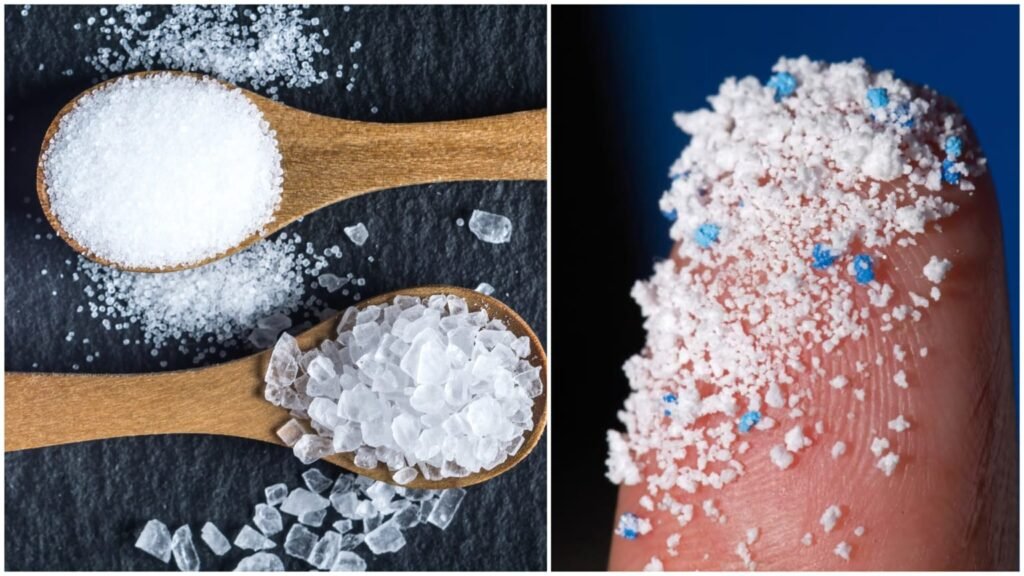A recent study has uncovered a worrying truth: all Indian salt and sugar brands are contaminated with microplastics. This shocking discovery has raised significant concerns about the impact of microplastics on our health and environment.
What the Study Found?

Researchers from the University of Manchester analyzed various salt and sugar samples from different Indian brands. The results were startling—every sample was found to contain microplastics. These tiny plastic particles, which are less than 5mm in size, have become widespread in our environment and are now making their way into our food.
How Do Microplastics In All Indian Salt and Sugar Brands Get There?
Microplastics come from several sources, including the breakdown of larger plastic waste, microbeads in personal care products, and synthetic fibers from clothing. They often end up in water bodies through improper waste disposal and industrial discharges. From there, they infiltrate the soil, crops, and food products during processing and packaging.
Why Should We Worry About Indian Salt and Sugar Brands Now?
Eating microplastics is a growing concern. While researchers are still studying the long-term health impacts, there are indications that microplastics can carry harmful chemicals. These chemicals might lead to digestive issues, hormonal disruptions, and even cancer when consumed over time.
Impact on the Environment
The environmental impact of microplastics is equally alarming. Marine life often mistakes these particles for food, leading to ingestion and accumulation in the food chain. This not only harms aquatic life but also affects the larger ecosystem, eventually impacting human health as contaminated seafood makes its way to our plates.
What Can Be Done?
Given these findings, there is an urgent need for stricter regulations and better waste management practices to tackle microplastic pollution. The Indian government, along with food industry leaders, must work together to develop strategies to reduce plastic waste and prevent contamination of food products.
How Can Consumers Help?
Consumers can also play a crucial role in fighting microplastic pollution. By reducing plastic use, supporting sustainable products, and advocating for better environmental practices, individuals can make a difference. Choosing brands that prioritize eco-friendly packaging and transparent sourcing can also help minimize exposure to microplastics.
In conclusion, the discovery of microplastics in all Indian salt and sugar brands is a wake-up call for everyone. Tackling this issue requires a joint effort to improve waste management, enforce stricter regulations, and promote sustainable practices. By taking collective action, we can work towards a cleaner, healthier future free from the dangers of microplastic contamination. Stay updated on this and other important environmental issues to make informed decisions for a better tomorrow.
